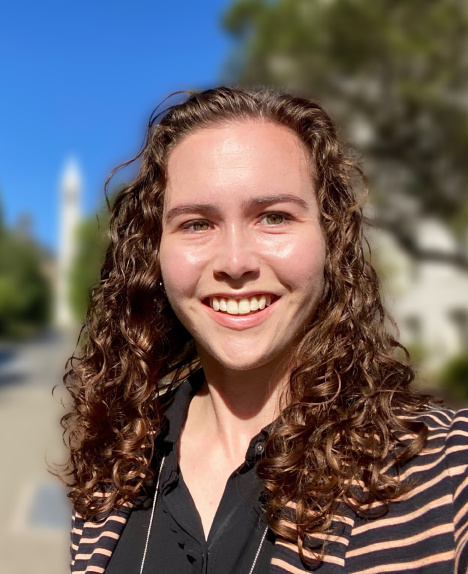Julia Rogers

Julia Rogers is a Jane Coffin Childs Postdoctoral Fellow in the Department of Systems Biology. She aims to uncover the biophysical mechanisms responsible for cell homeostasis by integrating molecular- and systems-level knowledge into unifying theories. As an NSF Graduate Research Fellow at UC Berkeley (Chemistry), she obtained insights into the molecular properties and microscopic dynamics of biomolecules that enable collective functions, in particular the maintenance of cell membrane compositions, using simulation and theory. Currently, her postdoctoral research focuses on developing integrative data- and physics-based modeling frameworks using the tools of machine learning and statistical mechanics to investigate cell signaling networks at proteome scale.
PhD, University of California, Berkeley
Physical Chemistry
BS, Tufts University
ACS Certified Chemistry and Biotechnology
* Equal contributions. ‡ Corresponding/co-corresponding author.
J. R. Rogers,‡ G. Nikolényi, M. AlQuraishi,‡ “Growing ecosystem of deep learning methods for modeling protein–protein interactions,” Protein Eng. Des. Sel. 36, gzad023 (2023).
J. R. Rogers‡ and P. L. Geissler, “Ceramide-1-phosphate transfer protein enhances lipid transport by disrupting hydrophobic lipid–membrane contacts,” PLoS Comput. Biol. 19, e1010992 (2023).
G. R. Bowman, S. J. Cox, C. Dellago, K. H. DuBay,‡ J. D. Eaves, D. A. Fletcher, L. B. Frechette,‡ M. Grünwald, K. Klymko, J. Ku, A. Omar, E. Rabani, D. R. Reichman, J. R. Rogers,‡ A. M. Rosnik, G. M. Rotskoff,‡ A. R. Schneider, N. Schwierz, D. A. Sivak,‡ S. Vaikuntanathan, S. Whitelam,‡ A. Widmer-Cooper, “Remembering the work of Phillip L. Geissler: A coda to his scientific trajectory,” Annu. Rev. Phys. Chem. 74, 1 (2023).
L. M. Hamerlynck, A. J. Bischoff, J. R. Rogers, T. D. Roberts, J. Dai, P. L. Geissler, M. B. Francis, N. S. Ginsberg, “Static disorder has dynamic impact on energy transport in biomimetic light-harvesting complexes,” J. Phys. Chem. B 126, 7981 (2022).
J. R. Rogers,‡ G. Espinoza Garcia, P. L. Geissler,‡ “Membrane hydrophobicity determines the activation free energy of passive lipid transport,” Biophys. J. 120, 3718 (2021).
J. R. Rogers and P. L. Geissler, “Breakage of hydrophobic contacts limits the rate of passive lipid exchange between membranes,” J. Phys. Chem. B 124, 5884 (2020).
M. Delor,* J. Dai,* T. D. Roberts,* J. R. Rogers,* S. M. Hamed, J. B. Neaton, P. L. Geissler, M. B. Francis, N. S. Ginsberg, “Exploiting chromophore–protein interactions through linker engineering to tune photoinduced dynamics in a biomimetic light-harvesting platform,” J. Am. Chem. Soc. 140, 6278 (2018).
J. R. Rogers, S. M. McHugh, Y.-S. Lin, “Predictions for α-helical glycopeptide design from structural bioinformatics analysis,” J. Chem. Inf. Model. 57, 2598 (2017).
S. M. McHugh,* J. R. Rogers,* S. A. Solomon,* H. Yu,* Y.-S. Lin, “Computational methods to design cyclic peptides,” Curr. Opin. Chem. Biol. 34, 95 (2016).
S. M. McHugh,* J. R. Rogers,* H. Yu, Y.-S. Lin, “Insights into how cyclic peptides switch conformations,” J. Chem. Theory Comput. 12, 2480 (2016).
A complete publication list can be found on google scholar.